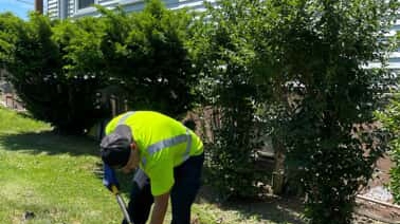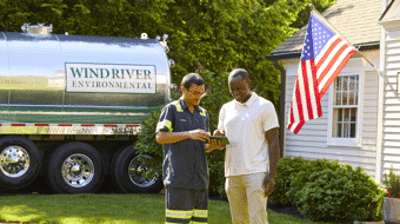3-Step Septic Maintenance Plan
It’s incredibly important for you to keep your septic system well-maintained. The average cost of a septic system replacement is $26,000. To limit your risk of ever having to pay this large sum, the most important “do” for your septic system is to keep it maintained by following our 3-step septic maintenance regimen.
1. Regular Septic Pumping Service
The first step is to schedule regular pumping service. If you haven’t had your septic system pumped in more than two years, visit our Residential Portal to schedule a service.
2. Bacterial Additive Products
The second step is to use bacterial additives in your septic system. These bacteria ensure that your system is able to break down the solids that enter the system and keep it working properly.
So that you don’t forget to add the bacteria, sign up now for the Wind River Environmental bacterial additives program and we’ll send you a reminder postcard every two months.
Need to order bacterial additives? Contact us today to purchase Wind River Environmental Septic System Treatment products.
3. Septic System Filter
The third step is to use a septic system filter. This will ensure that solids remain in the septic tank and not clog your leach field, the most expensive part of your system. A septic system filter works much like a coffee filter – it catches suspended solids.
As a Wind River Environmental customer, part of our normal service provided to you will be to clean your filter.
Septic System Do’s & Don'ts
Septic System Do’s
- Do spread laundry use over the week rather than many loads on one day.
- Do make a permanent record of where the key parts of your septic system are located for future maintenance (e.g., septic pumping service or field repairs).
- Do have septic pumping service regularly.
- Do keep the records of septic pumping service and septic system maintenance.
- Do use water-conserving devices where possible such as low-flush toilets and low-flow showerheads.
- Do clean the lint trap on your washing machine regularly.
- Do check any pumps, siphons or other moving parts of your system regularly.
- Do remove or prevent trees with large root systems growing near the leach field.
- Do keep surface water from upslope or from roof drains away from the leach field.
- Do check your interceptor drain regularly to ensure that it is free-flowing.
- Run water regularly in seldom used drains such as sinks, tubs, showers, etc., to avoid noxious gases from building up and causing odors inside.
Acceptable Products
- Detergents – should be in liquid form, concentrated, low-sudsing, low- or no-phosphate and biodegradable.
- Toilet Paper – should be single-ply toilet paper because it breaks down in the septic system faster and better than higher ply count toilet paper. Use toilet paper labeled biodegradable, recycled or septic-safe.
- Cleaning Products – should be non-chlorine, non-ammonia, non-antibacterial, non-toxic and biodegradable cleaning products. Most all-natural cleaners are septic safe.
Septic System Don’ts
- Don’t overload the septic system with high volumes of water.
- Don’t connect basement sump pumps to your septic system.
- Don’t connect backwash from water treatment devices directly to your septic system without professional advice.
- Don’t use a garbage disposal. Chopped up food particles do not break down in the septic tank and can make their way out into your leach field lines causing clogs.
- Don’t allow large amounts of fats, chemicals or solvents to enter the septic system; and don’t allow any plastics to enter.
- Don’t enter a septic tank without proper ventilation because sewer gases can be fatal. Also, confined space entry law requires, among other stipulations, that a second person be present above ground.
- Don’t allow vehicles or heavy equipment to drive over or park on the leach field. This may compact the soil and crush the piping.
- Don’t plant anything over the leach field except grass. Especially do not cover the septic tank or leach field with asphalt or concrete or other impermeable material.
- Don’t put in a separate pipe to carry wash waters to a side ditch or woods. These “greywaters” also contain disease-carrying organisms.
- Above all else, don’t wait for signs of system failure. Check your septic system regularly.
Do Not Flush
The best thing to do for your septic system is to be sure not to flush anything other than human waste and toilet paper, preferably single-ply toilet paper.
Even if items are marked as “septic safe,” do not flush them. For example, some baby wipes and cat litter may be labeled this way. It is not good for your septic system to flush anything other than human waste and toilet paper because it does not break down in the septic system correctly.
No Flush List
- Backwash water from water softeners
- Cigarettes
- Cloth
- Coffee grounds
- Condoms
- Dental floss
- Disinfectants
- Disposable diapers
- Fats, grease and oils
- Kitty litter
- Other chemical wastes
- Paints
- Paper towels
- Pesticides
- Photographic chemicals
- Pills and unused medication
- Plastic materials
- Poisons
- Sanitary napkins
- Sump pump discharge
- Tampons
- Thinners
- Tissues
- Varnishes
- Waste oils
Odors
Odors coming from outside the house can be an indication that your septic system is overfull, and you need septic pumping service. A vent pipe may also be installed to help release odors from the septic system.
Sometimes, when drains are not used, the noxious gases can build up and cause odors. For example, if you have a shower in the house that gets little use, you may notice that at times there is an odor coming from that area. Running the water regularly in those drains will help keep odors at bay.
Slow Drains
Slow drains can be a sign that your tank needs to be pumped or you need bacterial additives to help break down accumulating solids. If you have slow drains, contact us for troubleshooting help.
Garbage Disposals
Garbage disposals are not recommended with a septic system. Chopped up food particles from the garbage disposal make their way into the tank and do not completely biodegrade before they can get out into your leach field lines. These lines can then become clogged with food and cause a backup.
Filters
Filters are placed on the outlet line of your septic tank and keep the hair, grit, grime and food particles from escaping into your leach field lines and causing issues. Having a filter is a good way to help prevent unwanted debris from becoming an issue.


.2504171222540.png)

